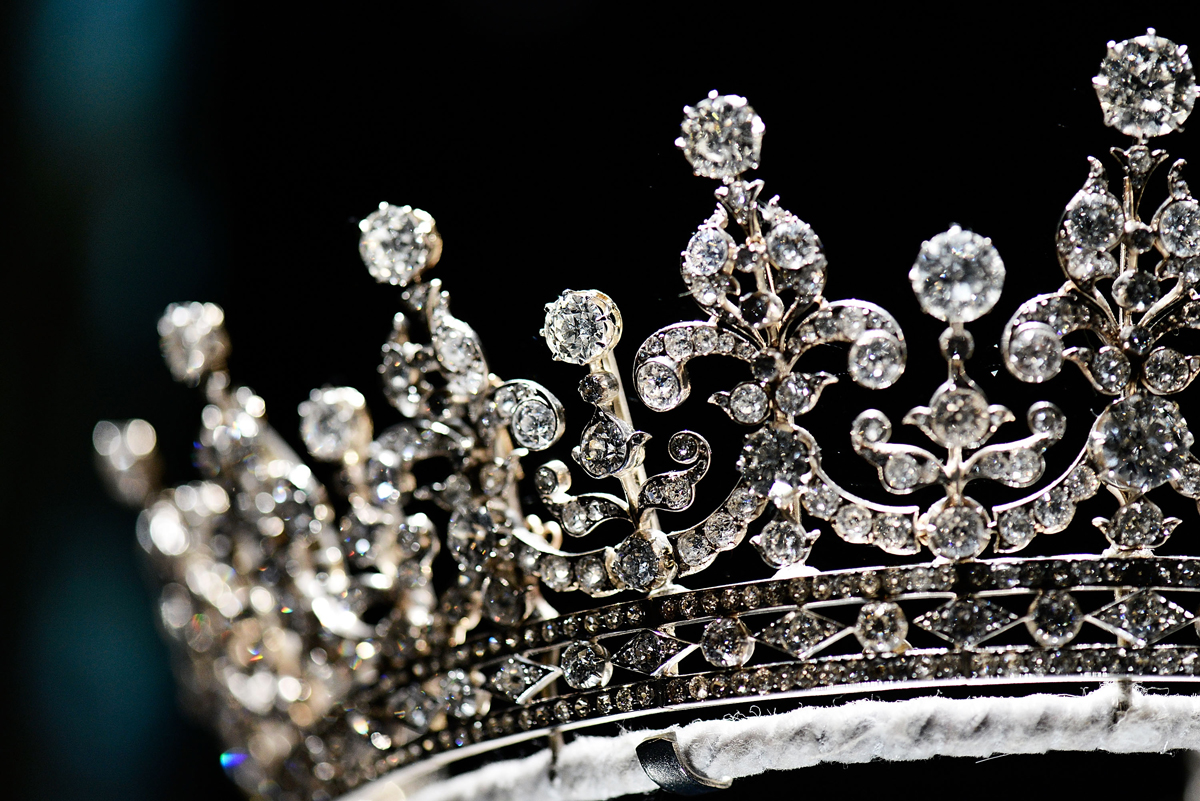
Elegant, balanced, and packed with sparkling diamonds: it’s easy to see why generations of the British royal family have loved the Girls of Great Britain and Ireland Tiara. Let’s dig into the tiara’s history today.
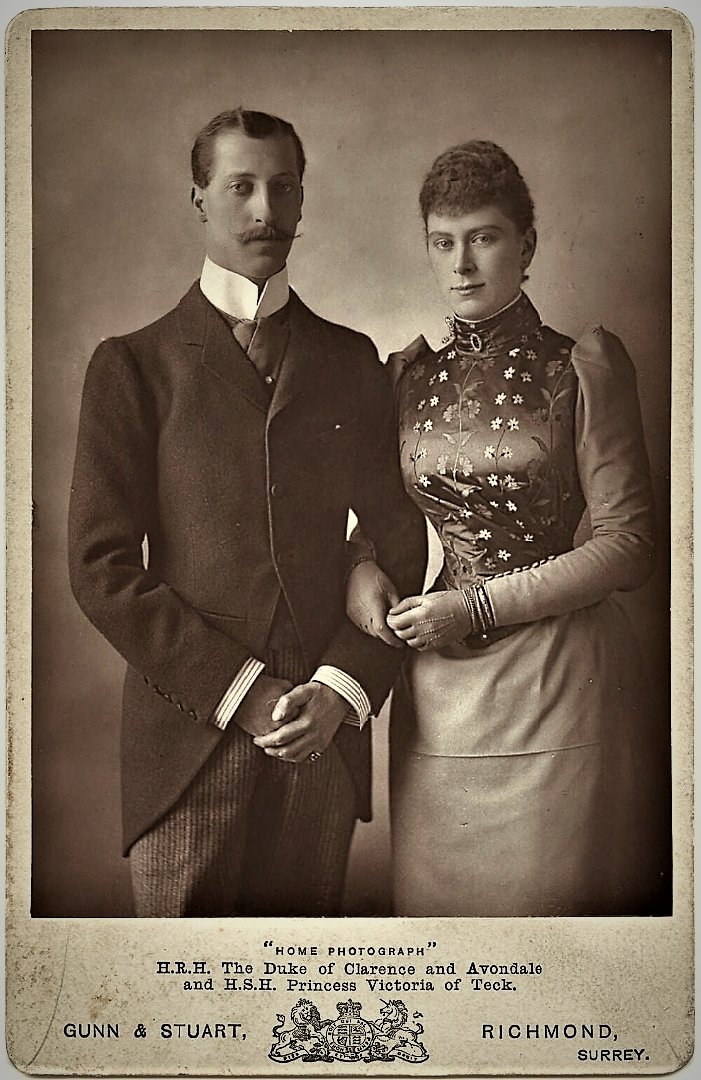
The history of the tiara goes back more than a century, to the early 1890s, when royal wedding excitement in Britain was suddenly mixed with tragedy. Princess Mary of Teck, the daughter of one of Queen Victoria’s cousins, was engaged to marry the future king, Prince Albert Victor, Duke of Clarence and Avondale in December 1891. But he suddenly died of influenza only a few weeks after the engagement was officially announced. Mary (called “May” in her family) was left without a groom, and the royal family had a new heir to the heir—the Duke of Clarence’s younger brother, Prince George, Duke of York.
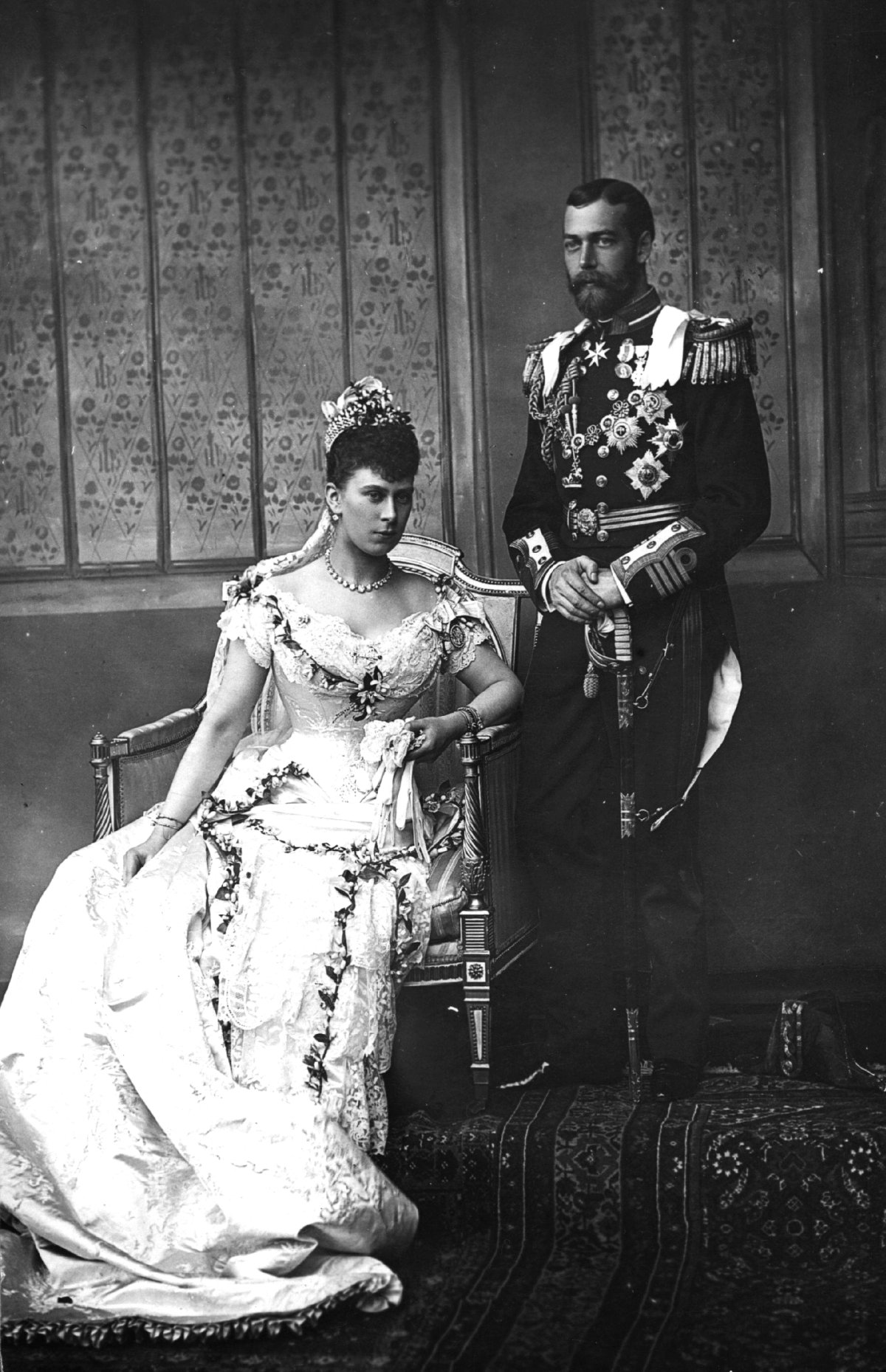
Prince George had been in love with one of his cousins, Princess Marie of Edinburgh, but she’d turned him down in favor of the Crown Prince of Romania. In the spring of 1893, though, George did what many of his future subjects had long expected: he proposed to his late brother’s fiancée. May accepted, and the pair were married at the Chapel Royal in St. James’s Palace on July 6, 1893.
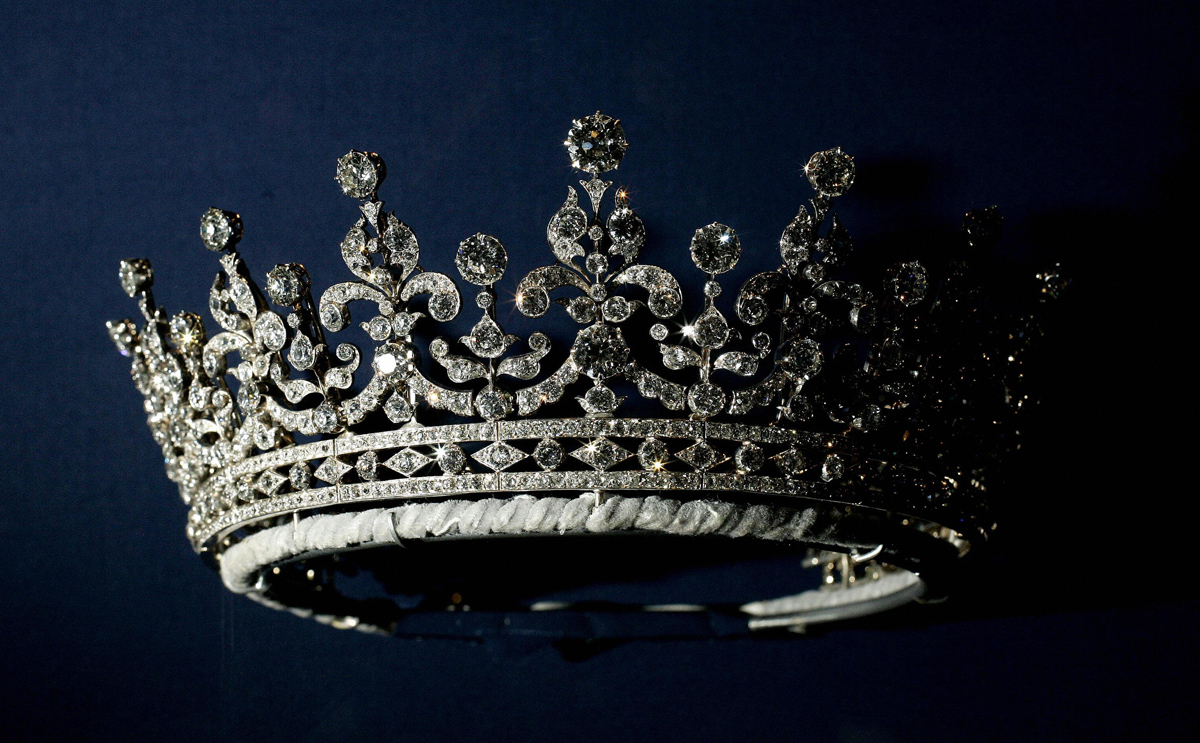
Among May’s glittering hoard of wedding presents was the Girls of Great Britain and Ireland Tiara. The tiara takes its name from the committee of young women, led by Lady Eva Greville, who raised money for its creation via subscription. They purchased the tiara from Garrard in June 1893. The tiara, which features festoon and fleur-de-lis designs, was made of diamonds set in silver and gold, and the original 1893 version was topped by fourteen pearls. Inside the custom mahogany box provided by the jeweler, a second frame was also supplied, which allowed the tiara to be worn as a coronet. Even better, it could also be taken off a frame entirely and worn as a necklace.
Incidentally, Lady Eva’s committee was so successful in their appeal to raise funds for the tiara that they ended up with much more money than they needed. The extra funds ended up serving a very good purpose. As the tiara was being made, a maritime disaster shocked Britain: a battleship, the HMS Victoria, accidentally collided with another ship off the coast of Tripoli, killing more than 350 sailors as it sank. May personally requested that the surplus funds from the appeal be sent to a fund that had been established to support the widows and children of the perished sailors.
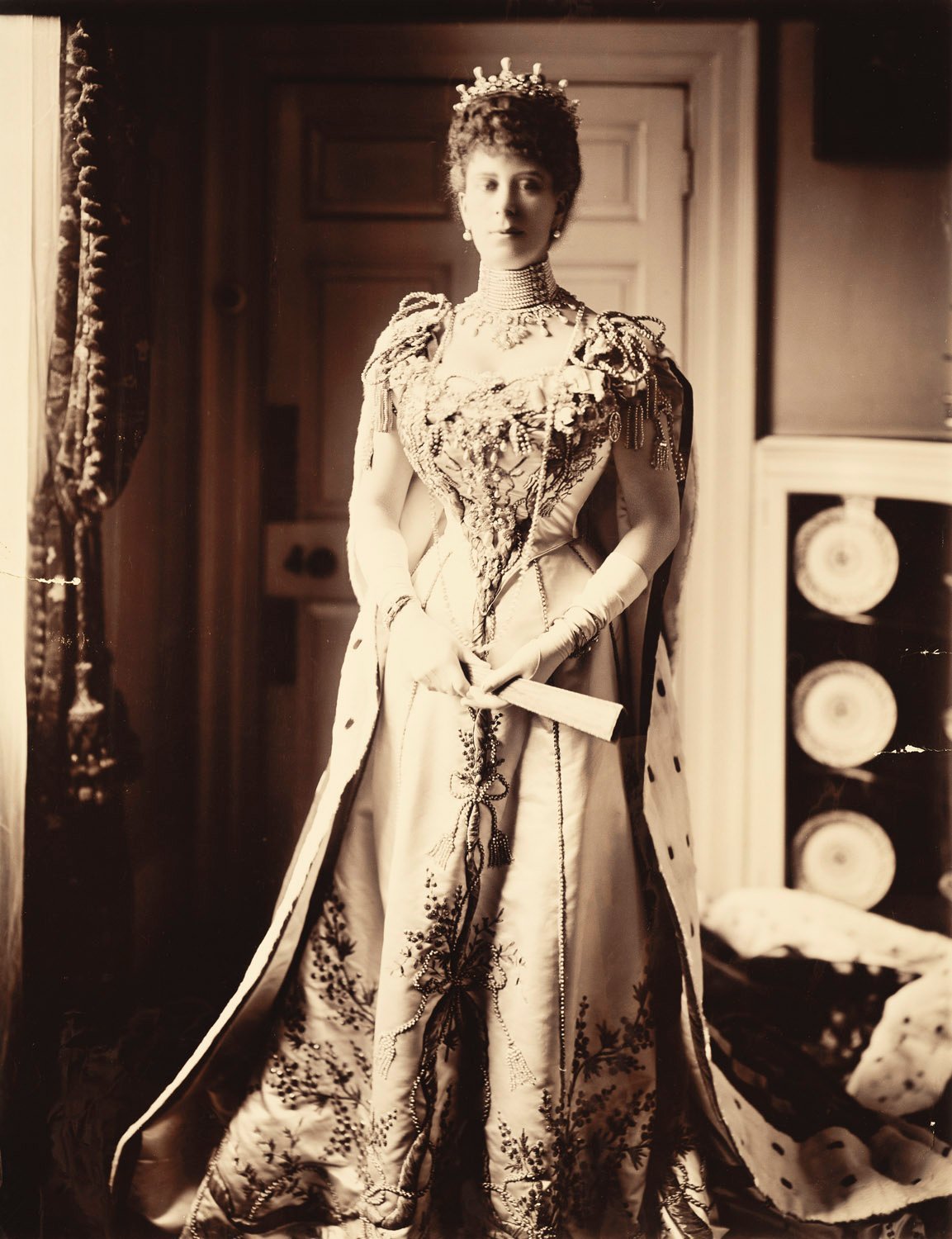
Although the new Duchess of York didn’t wear the tiara on her wedding day—she wisely chose to wear the diamond fringe presented to her by the groom’s grandmother, Queen Victoria—the tiara quickly became one of her favorite pieces. May wore it on its coronet frame at the famous Devonshire House Ball in 1897. She also wore the tiara when, as Princess of Wales, she attended the coronation of her father-in-law, King Edward VII, in 1902.
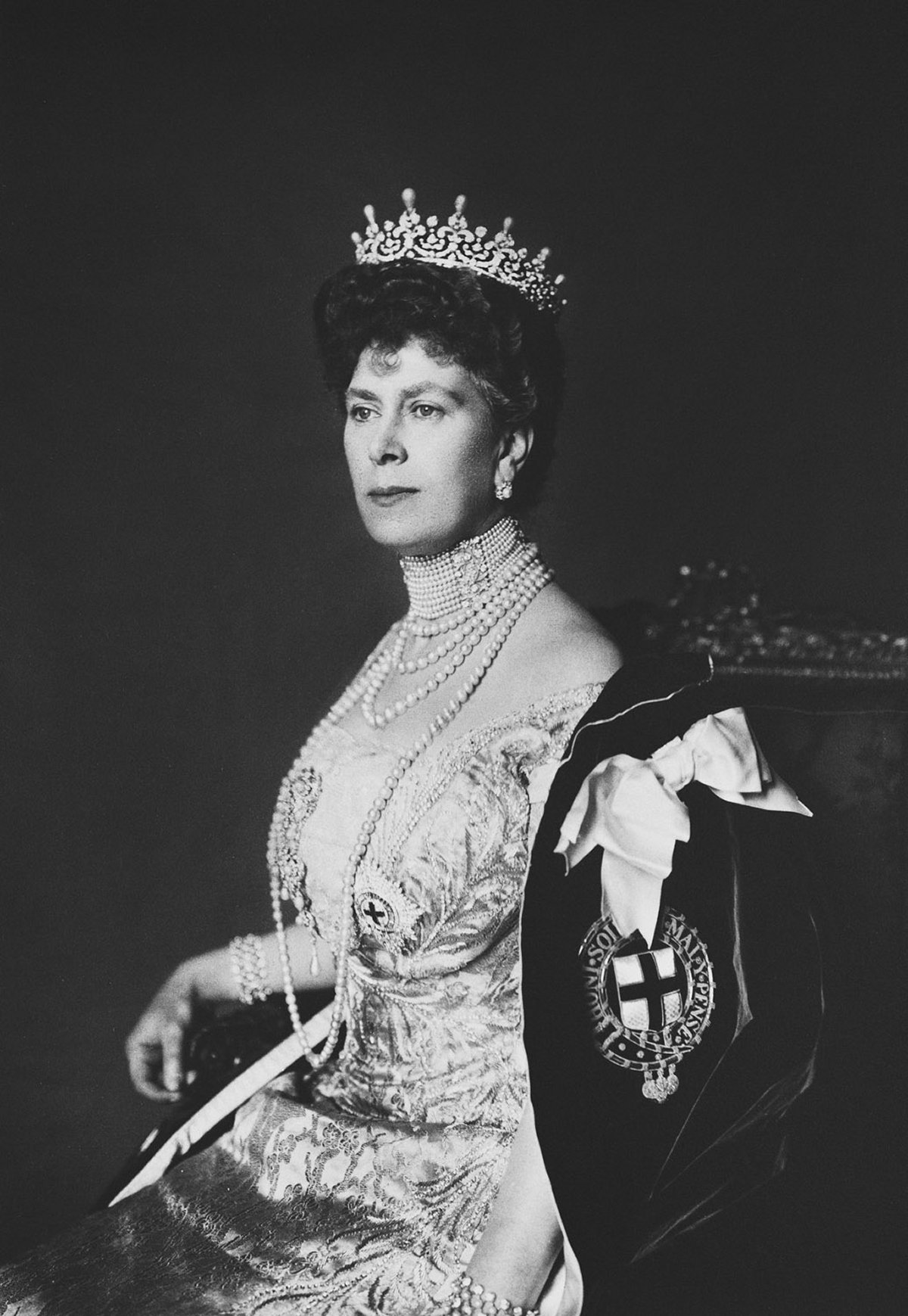
Queen Mary was photographed and painted in the tiara and her Garter robes in 1912, shortly after her own coronation. In 1914, however, she decided to tweak the tiara just a bit. She had Garrard remove the pearls from the top of the tiara, replacing them with 13 diamond brilliants. (The pearls were incorporated into her new Lover’s Knot Tiara.) The base of the tiara was also removed around this time so that it could be worn separately as a bandeau. In the 1920s and 1930s, Mary was frequently photographed in the tiara without the signature Garrard diamond-and-dot base.
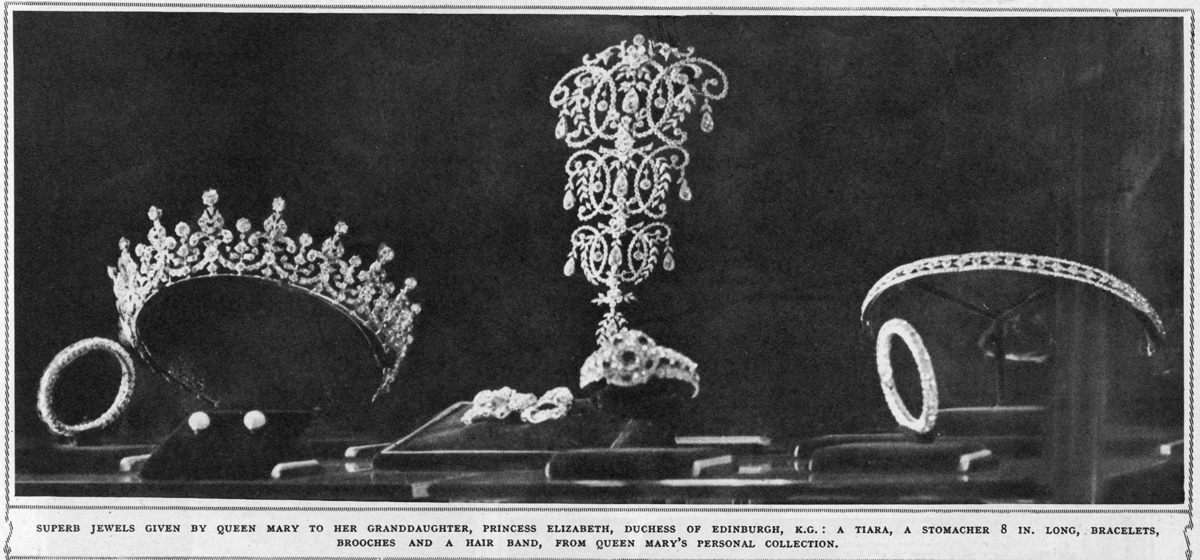
When Princess Elizabeth, Queen Mary’s granddaughter, married Prince Philip in November 1947, Mary decided to make the tiara one of Elizabeth’s wedding gifts. She presented her with both the tiara and its bandeau base (still separated as two distinct jewels and described as “a hair band” by the Illustrated London News caption), and both went on display at St. James’s Palace in London with the rest of Elizabeth’s bejeweled wedding presents.
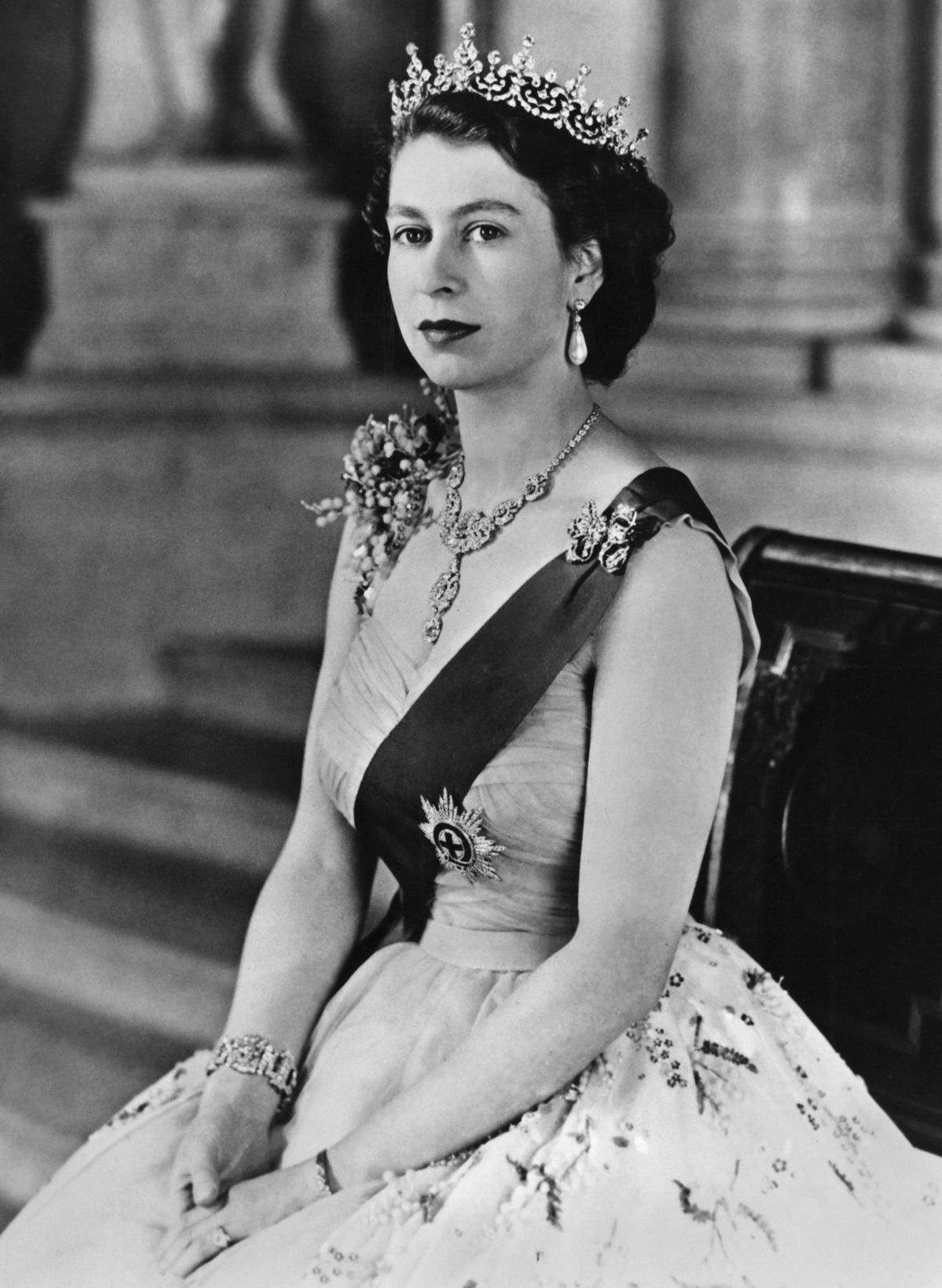
In recognition of the gift, Elizabeth reportedly called the diadem “Granny’s Tiara.” It quickly became a central part of her jewelry wardrobe, first as a princess, and then as Queen Elizabeth II. Above, she wears the tiara in an early portrait.
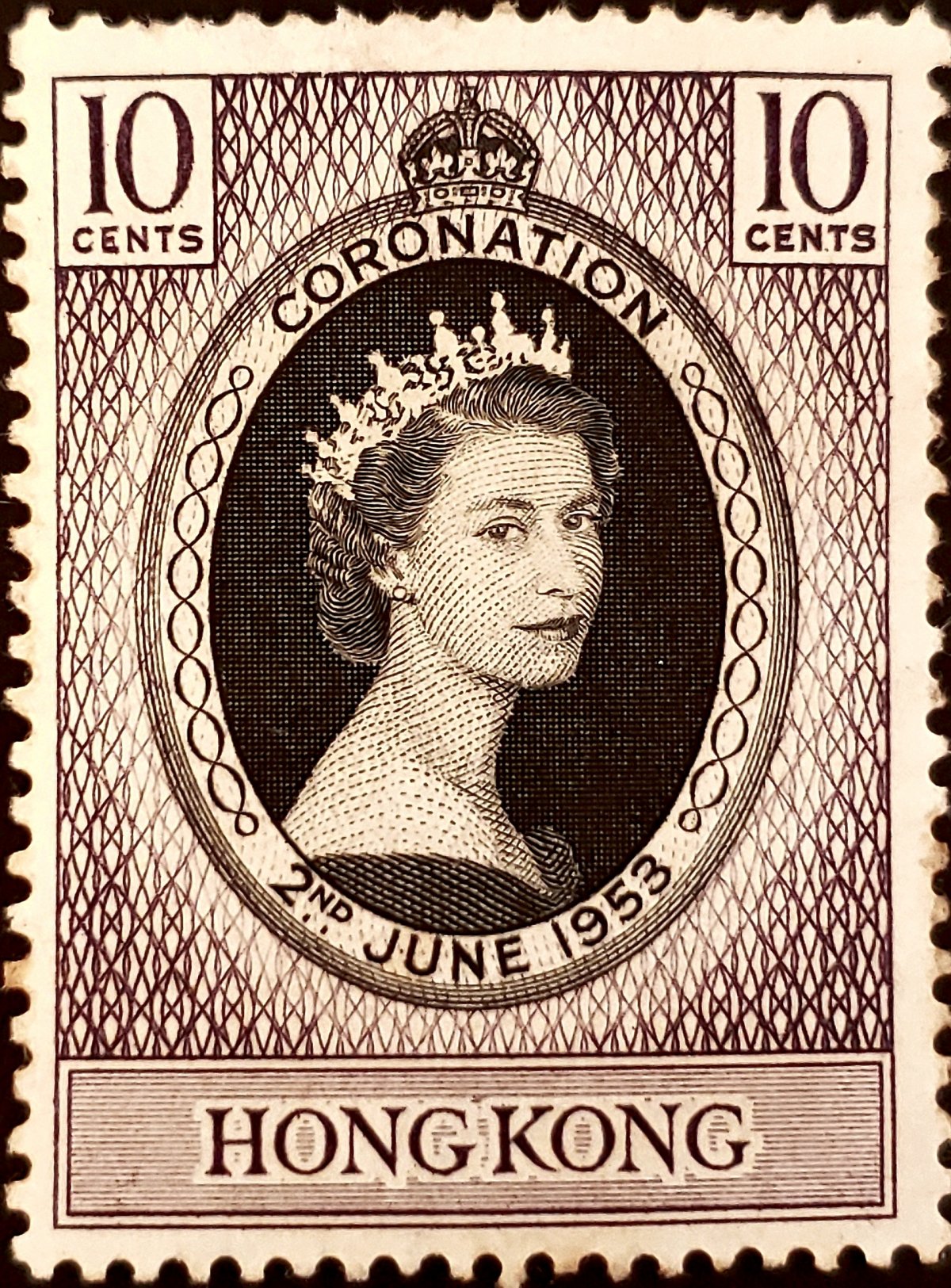
Portraits of Elizabeth wearing the tiara in the early months of her reign were used all over the world on stamps, coins, and bank notes, making the jewel particularly closely associated with the young monarch’s image.
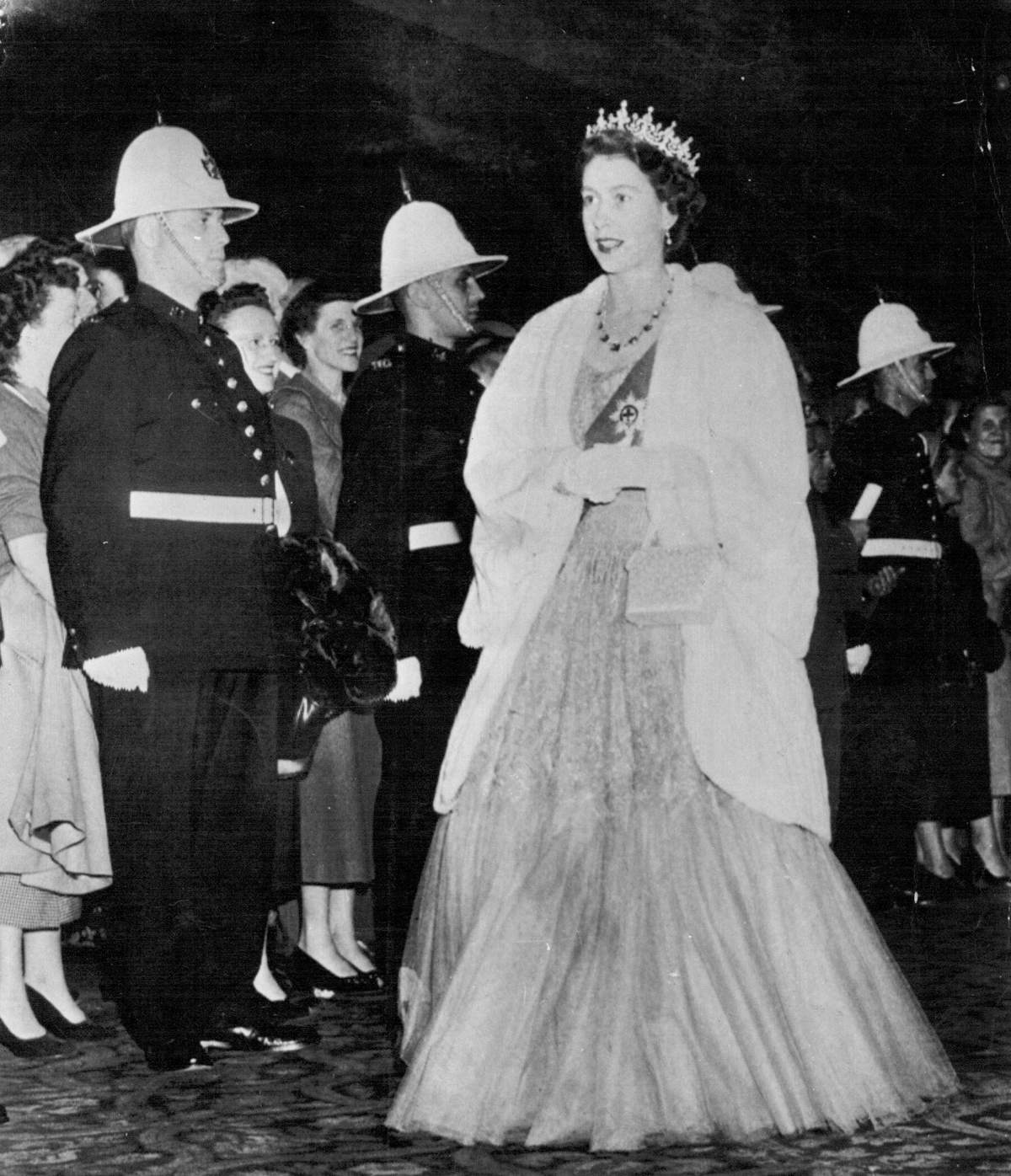
The young Queen brought the tiara with her during her travels across the globe, both before and after the dawn of her reign. Above, she wears the tiara for a state dinner in Quebec during her royal tour of Canada in 1951.
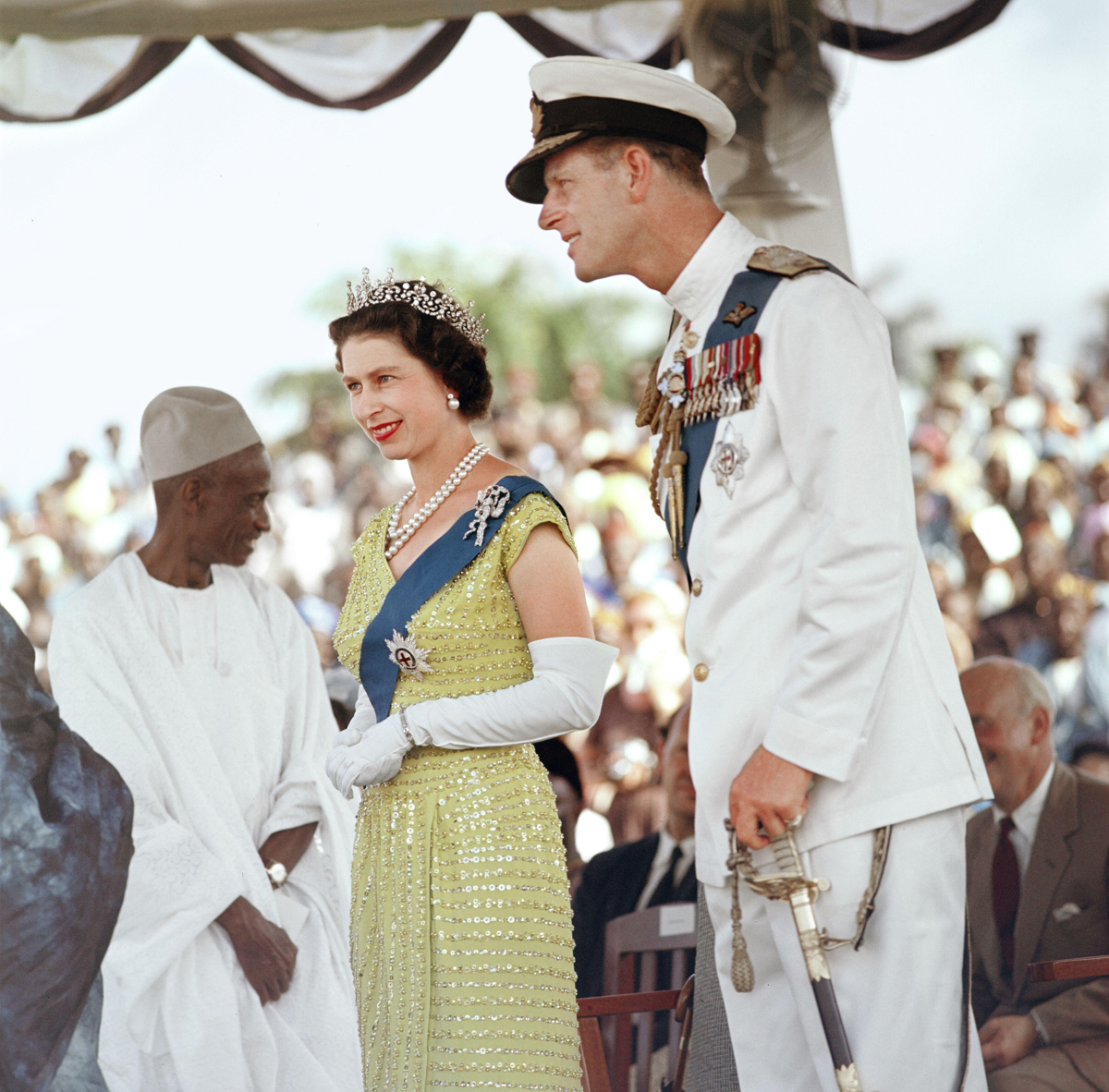
And here, she wears the tiara during her visit to Sierra Leone in 1961.
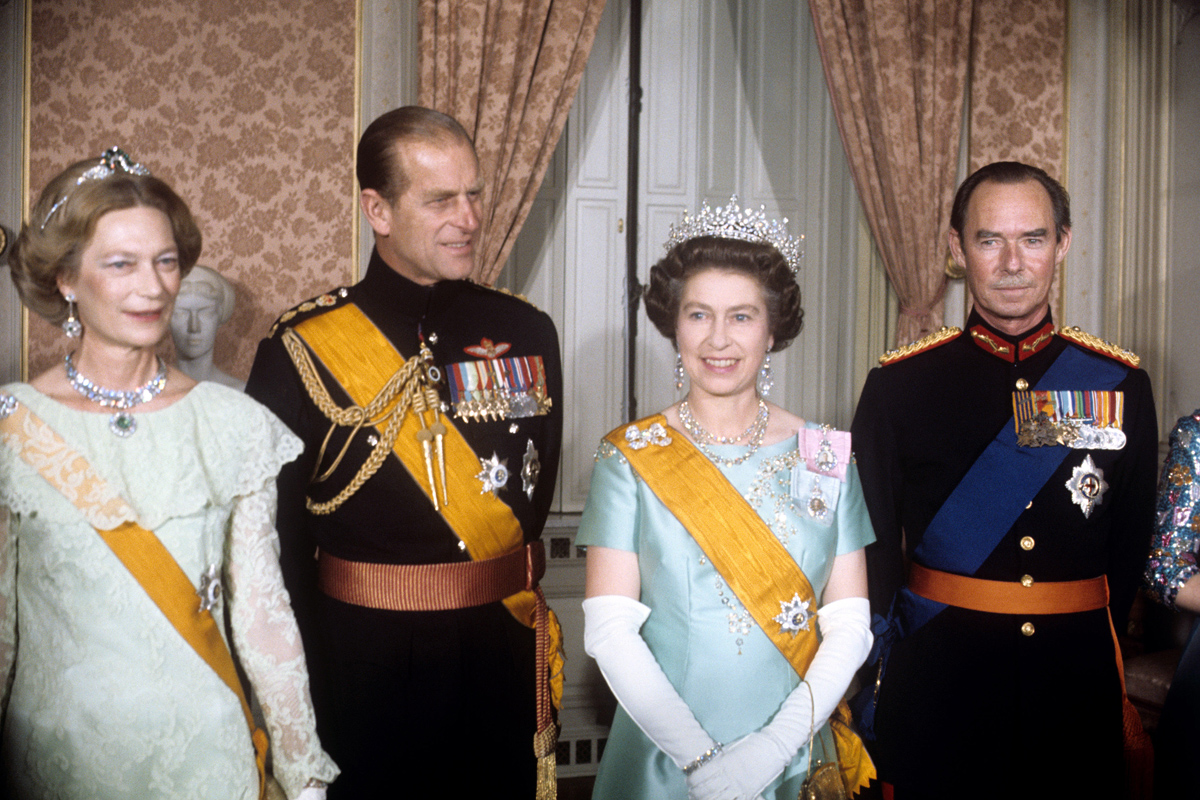
The tiara also accompanied her on her state visit to Luxembourg in 1976.
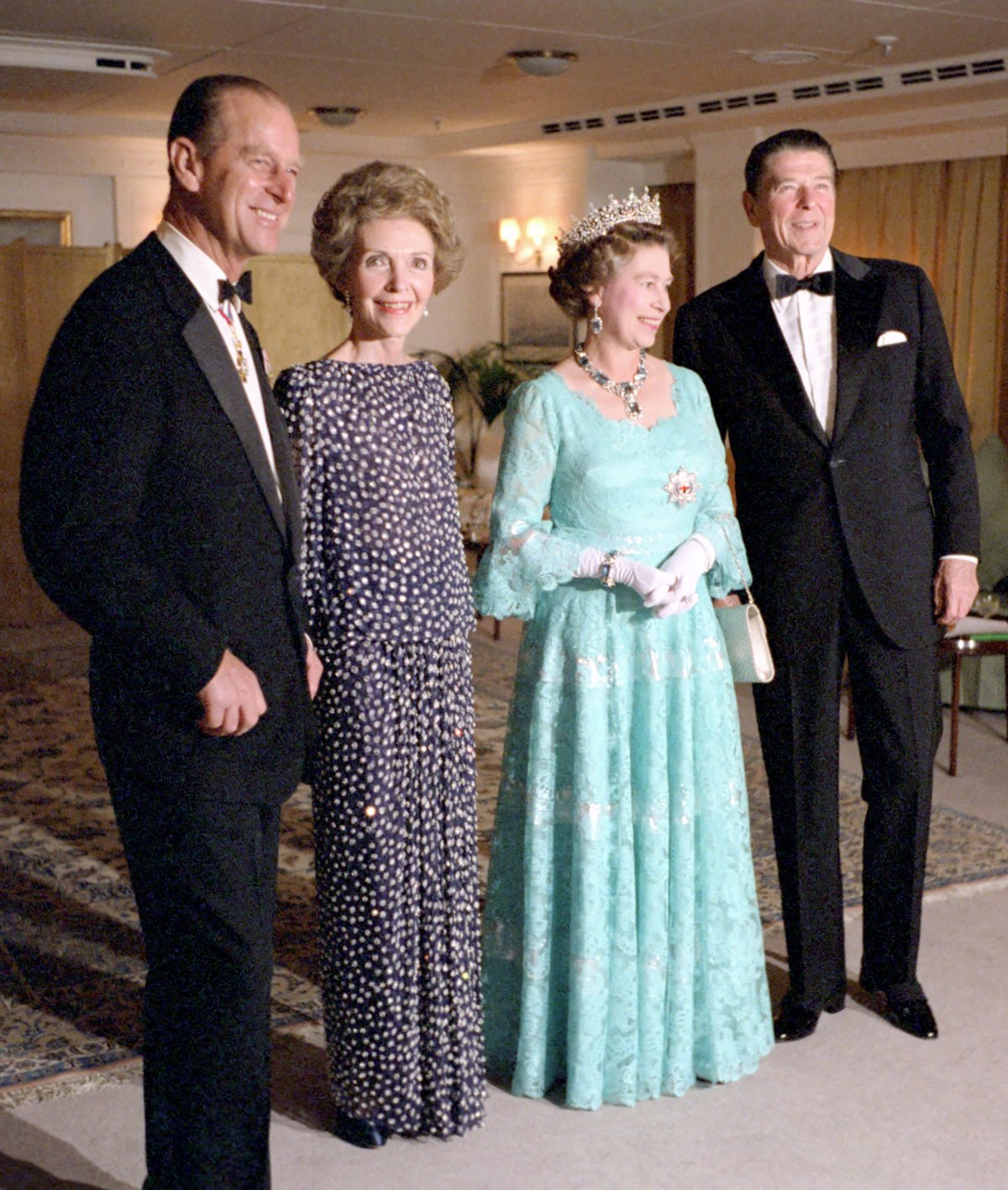
And here, she wears the tiara for a dinner on board the royal yacht Britannia with President and Mrs. Reagan during her visit to California in 1983.
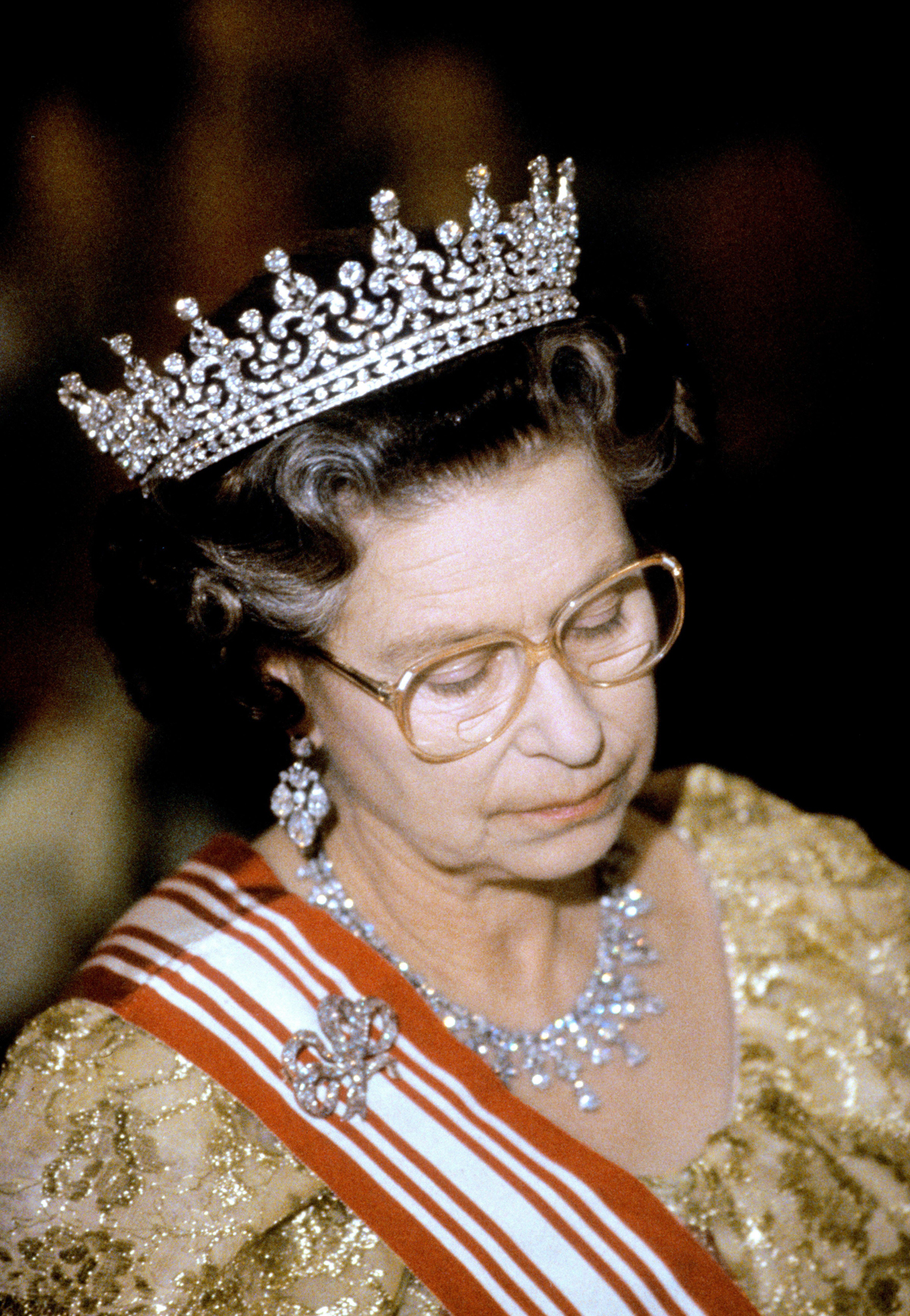
In the late 1960s, the bandeau base of the tiara was finally reunited with the rest of the sparkler, bringing the piece back to a more magnificent height. You’ll note the more imposing complete size of the tiara in the photograph above, taken in Singapore in 1989. The Queen has worn the tiara in that more complete form ever since, pairing it with virtually all of the other gala jewels from her collection, including her rubies, the emeralds from the Delhi Durbar Parure, the Brazilian Aquamarines, and even the Kent Amethysts.
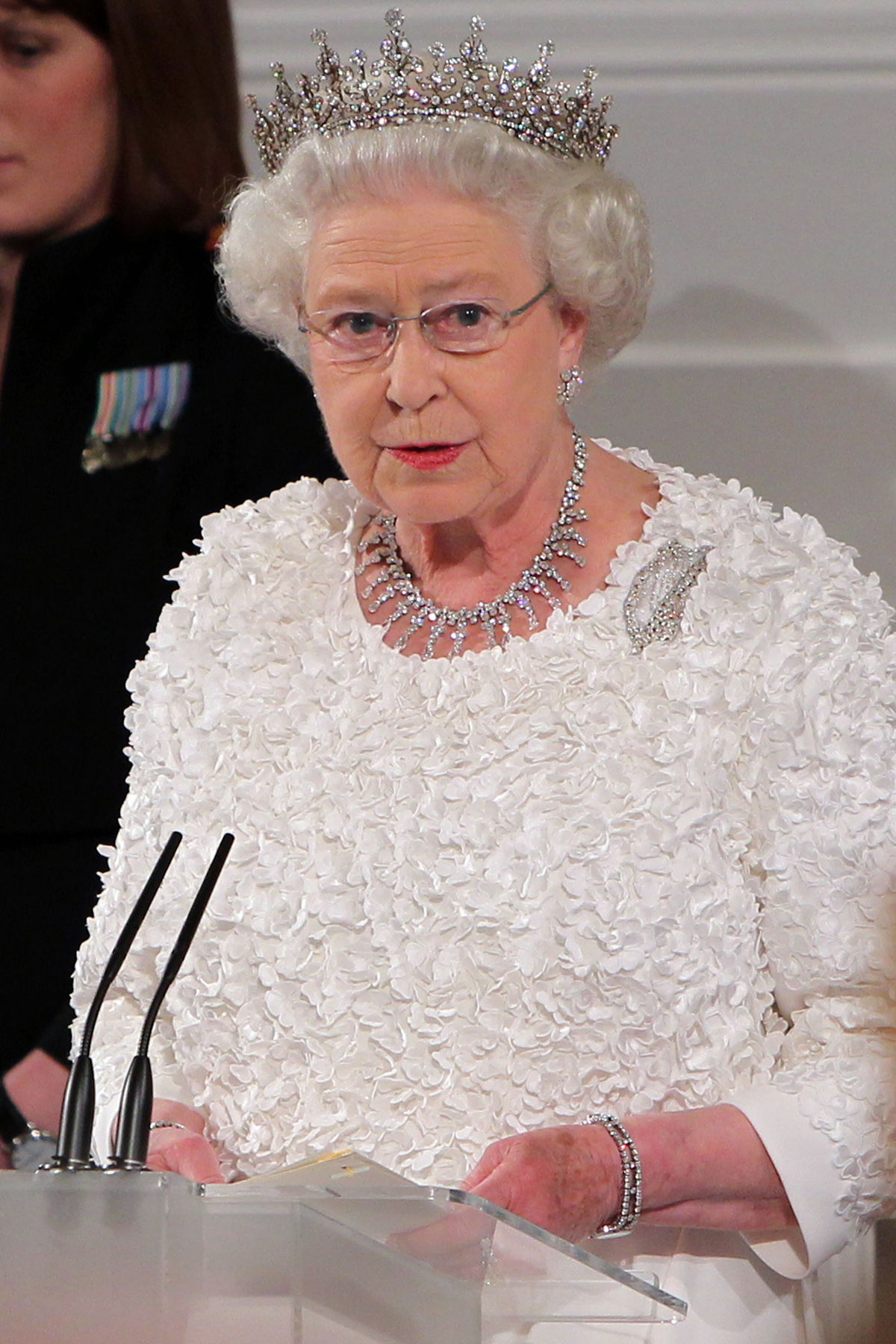
In the twilight years of her reign, the tiara became one of the only diadems that Elizabeth regularly wore. She chose it for several important recent occasions, including the landmark state visit to Ireland in 2011 and the commemoration of the 70th anniversary of D-Day in 2014.
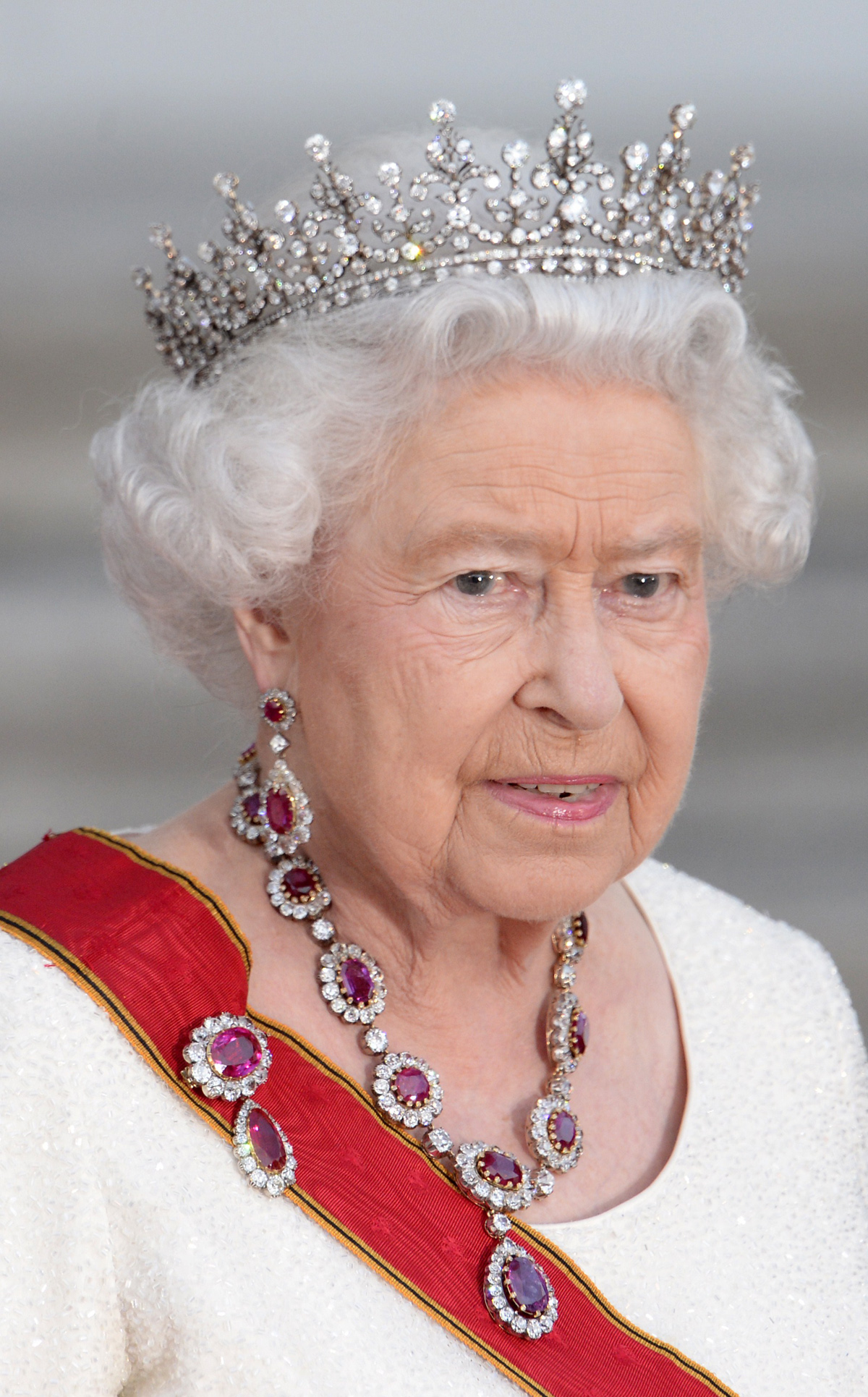
She also packed the tiara for her final foreign state visit, wearing it for a state banquet in Germany in 2015.
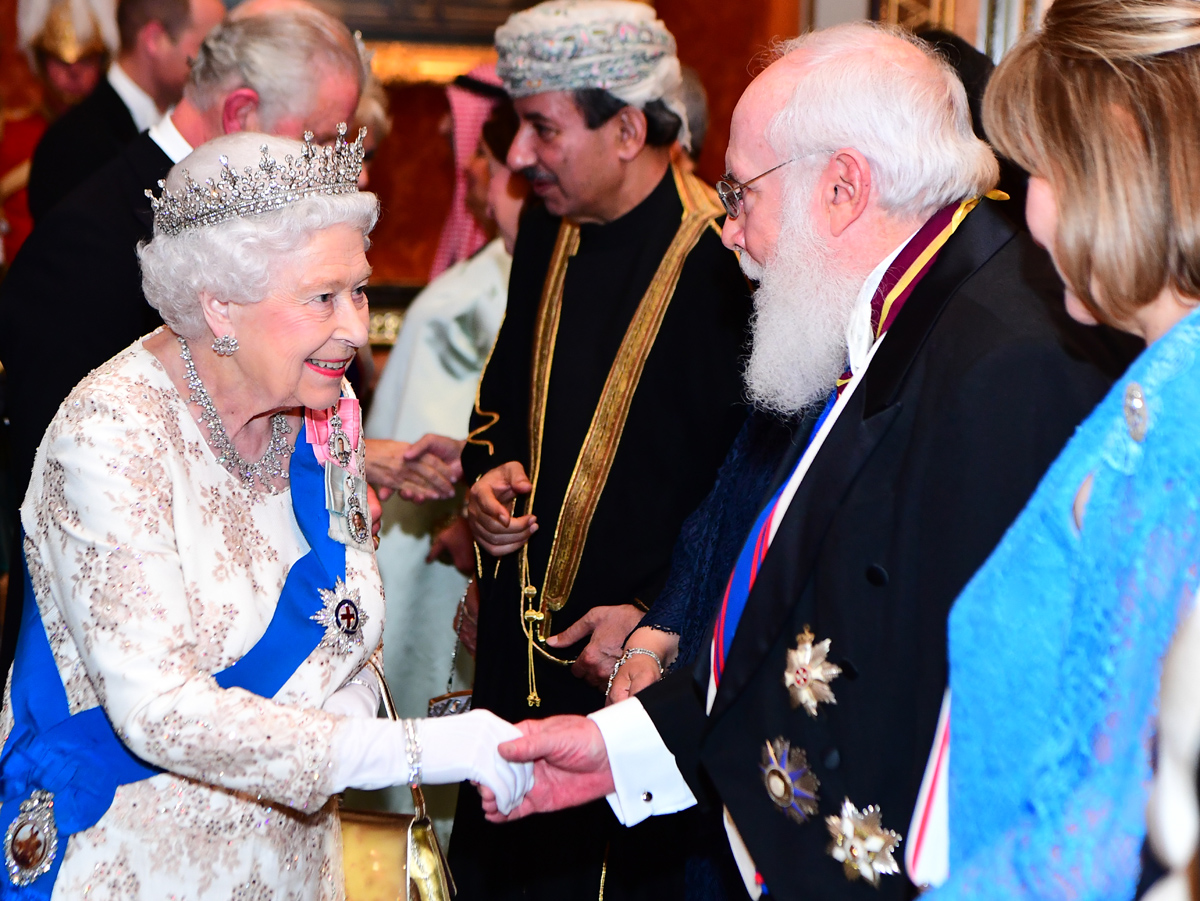
One of Elizabeth’s final appearances in the jewel took place at the Diplomatic Reception at Buckingham Palace in December 2018.
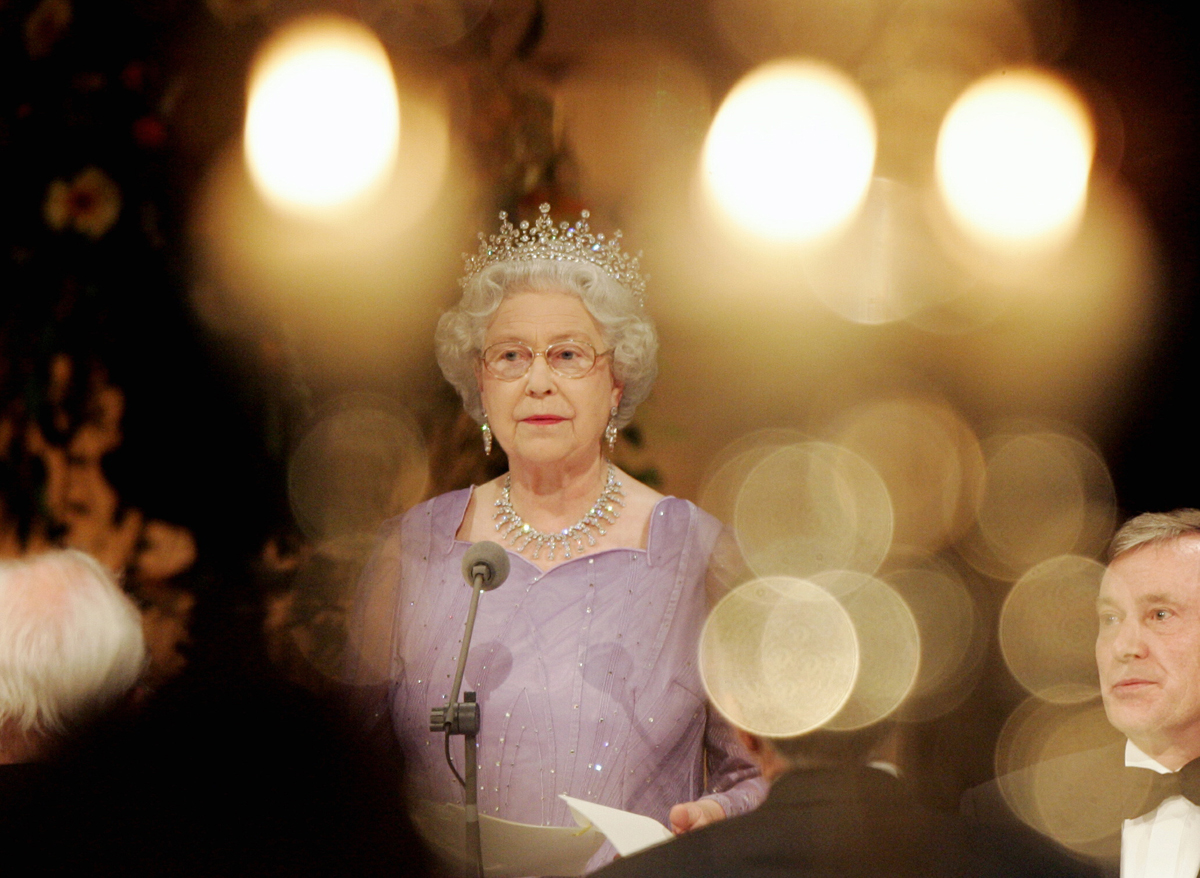
The tiara’s classic design will surely make it a favorite of royal ladies far into the future, but for years, it was difficult to imagine anyone else wearing the Queen’s signature tiara. The diadem was always “Granny’s Tiara” to Elizabeth, but she undoubtedly made it her own.
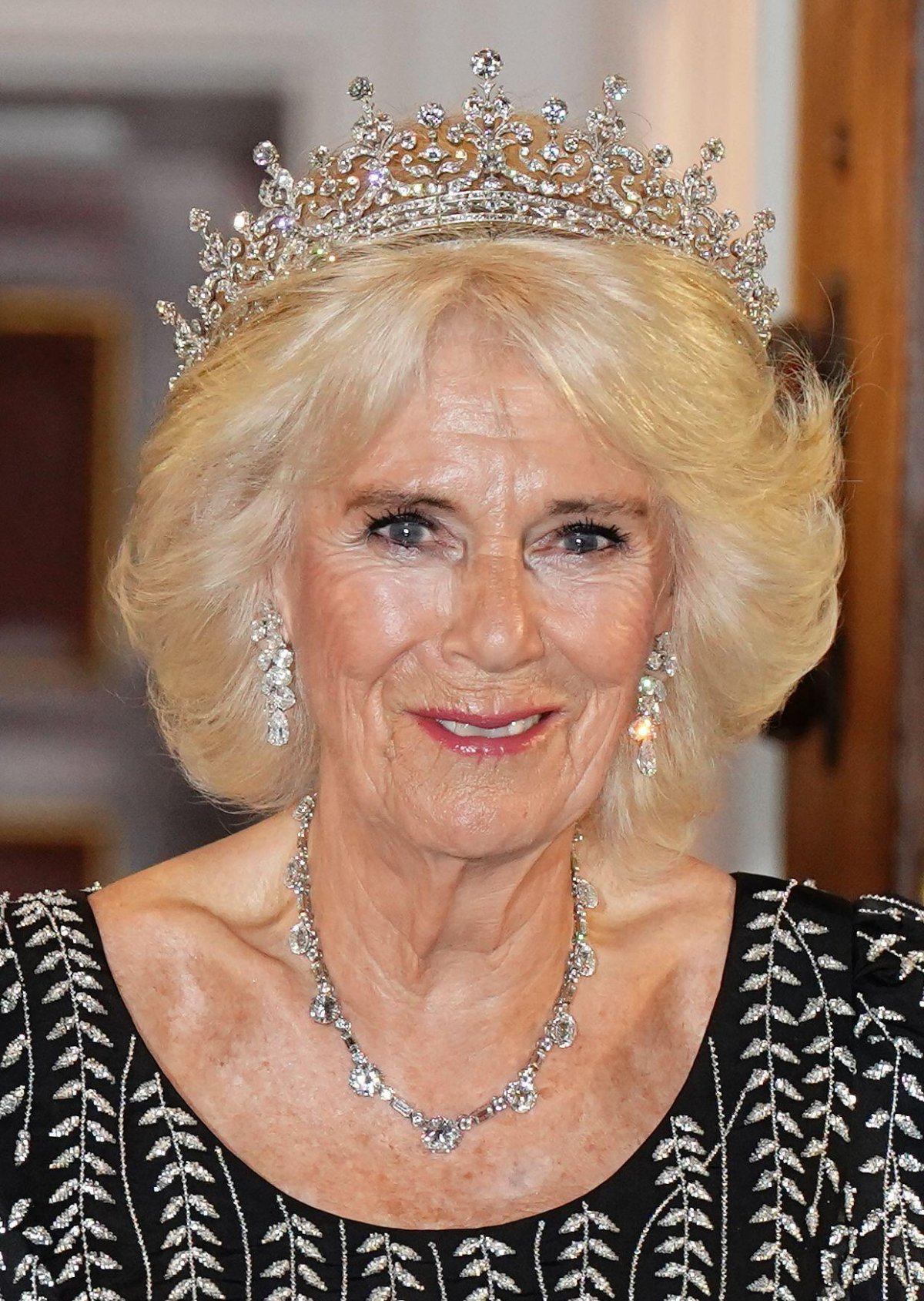
But time marches on. For a special reception at Mansion House in October 2023, Elizabeth’s daughter-in-law, Queen Camilla, made her debut in the tiara. She paired the jewel with another sentimental set of diamonds: the South African Diamonds, which were also gifted to Elizabeth in 1947.
Leave a Reply
You must be logged in to post a comment.